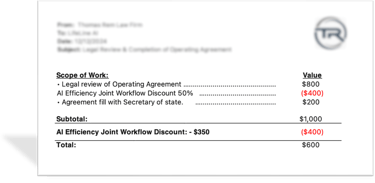An AI-Driven Alternative for Service Providers
1. Introduction
The rise of AI-powered services is reshaping industries. LifeLine AI is not positioning itself as the intellectual authority of this transformation but rather as an early adopter of an emerging industry shift.
This proposal introduces a joint workflow, allowing traditional service providers to enhance efficiency, improve deliverable quality, and minimize workload while ensuring savings and scalability for LifeLine AI.
By integrating AI Agents as an additional operational cost, covered by LifeLine AI, this framework offers a risk-free opportunity for providers to gain experience with AI integration before external market pressures force adaptation.
IMPORTANT NOTE:
AI integration in service workflows is designed to reduce time, effort, and operational costs for providers. In return, these efficiency gains should translate into savings for the AI model provider as well—reflected in fair charge adjustments and pricing flexibility.
If you are unwilling to share efficiency-driven savings, then this model is likely not a good fit for you. We are looking for partners who recognize the mutual benefits of AI-enhanced workflows and are open to fair, balanced collaboration.
2. The New Market Reality & Opportunity
AI’s Role in Service Professions
A study by the University of Pennsylvania*, “An Early Look at the Labor Market Impact Potential of Large Language Models,” highlights how AI is transforming research, operational efficiency, and strategic decision-making across multiple professions.
Traditional service providers have two choices:
• Early adaptation: Gain an advantage by integrating AI into their workflow while maintaining control over their expertise.
• Forced adaptation: Wait until external pressures demand change, limiting flexibility and negotiation power.
This proposal offers a first-mover advantage, allowing providers to shape their AI-assisted service models on their terms rather than being forced into rigid frameworks later.
3. The Joint Workflow Model
LifeLine AI has invested heavily in AI operations to convert variable costs into fixed investments, shifting traditional consultancy models into scalable AI-powered workflows.
Phase 1: AI-Driven Discovery & Preliminary Work (LifeLine AI’s AI Agents)
• AI Agents handle research, data gathering, and preliminary analysis—reducing repetitive manual work.
• AI operations are considered an additional effort from LifeLine AI, NOT a replacement for human expertise.
In Few Words, What to Expect?:
When the quote is accepted, you will receive an AI Agent’s Deliverable that has already handled the dirty and automatable work for you.
It’s difficult to generalize, but AI Agents will provide the closest deliverable to the demanded service, allowing you to focus on higher-value tasks.
• For a contract lawyer – The contract itself, pre-drafted for review.
• For a strategy consultant – A structured document with evaluated documentation.
• For a form-filling service – Fields pre-filled with supported definitions.
Phase 2: Expert Review & Execution (Service Provider’s Expertise)
• The provider validates, refines, and extends AI-generated insights.
• AI serves as a tool, not a decision-maker—the provider maintains full professional control.
Phase 3: Higher-Quality Deliverable (Joint Effort)
• A broader discovery phase ensures all critical insights are considered.
• Professionals are no longer constrained by fixed-fee time limitations—allowing for deeper, more valuable work.
•Professionals compete with each other with longer AI expertise and broader quality.
4. Addressing Key Concerns for Service Providers
AI Does Not Undermine Professional Expertise
AI assists rather than replaces by eliminating repetitive research work. Final decisions, strategic insights, and execution remain exclusively in the hands of the expert.
Fair Compensation & Pricing Flexibility
AI integration does not reduce compensation potential—it frees time for higher-value tasks. Providers are encouraged to shift toward value-based pricing models rather than hourly constraints.
Maintaining Industry-Specific Accuracy
AI-generated insights serve as a starting point, not final conclusions. Providers remain responsible for ensuring that all outputs meet industry-specific standards and regulations.
Clear Accountability for AI-Generated Work
AI is a research tool; providers remain the ultimate decision-makers. This ensures that liability does not shift unfairly to the provider.
Flexible Agreements & Risk-Free Exploration
The agreement includes a trial period and performance evaluation checkpoint, allowing both parties to refine the workflow before committing to a long-term structure.
Trust & Transparency in AI’s Role
AI is positioned as a productivity enhancer, not a competitor. The provider retains decision-making authority while leveraging AI for efficiency.
5. Key Benefits of This Model
For Service Providers
✅ New revenue opportunities—expand services into AI-augmented workflows.
✅ Reduced manual workload—AI handles repetitive tasks, freeing up strategic time.
✅ Higher-quality deliverables—thanks to a broader discovery phase.
✅ Early AI adaptation—avoid being forced into rigid AI models later.
✅ No additional costs—AI operations are absorbed by LifeLine AI.
For LifeLine AI
✅ Lower service costs—AI reduces billable hours spent on basic tasks.
✅ Faster service execution—AI speeds up research and analysis.
✅ Scalable consultancy—AI allows for efficient growth without sacrificing quality.
✅ Stronger partnerships—providers become collaborators in AI integration, not just contractors.
6. Framework for a Fair & Flexible Partnership
The agreement is designed for flexibility, ensuring both parties benefit fairly. Both sides must compromise on expectations of time, effort, and cost-sharing.
A starting negotiation base of 50% off for both sides establishes a shared commitment to innovation.
The 50% negotiation base is a starting point, not a fixed requirement. It serves as an open invitation for providers to propose their own terms based on the actual efficiency gains they experience.
AI-driven workflows can reduce service time by 10% or even 90%—but the exact impact depends on the specific process. The only way to determine fair adjustments is to test the collaboration and measure the real savings.
This is a negotiation, not a demand. If you see potential but have a different perspective on cost adjustments, we encourage you to make an offer by sending a quote to the person who shared this link. Please include an additional line labeled as shown bellow:
📌 “AI Efficiency Joint Workflow Discount”
AI Operations & Traditional Services Joint Workflow
(5 min reading)


A trial phase is included to assess workflow efficiency before long-term commitments.
Let’s Shape the Future Together
LifeLine AI is prepared to meet providers halfway, setting a 50% negotiation base as a statement of shared commitment to shaping the future of service delivery.
This is not a traditional service agreement—it is an AI partnership opportunity. If you are ready to:
✅ Reduce your workload while maintaining high-quality service
✅ Expand your expertise in AI-powered workflows
✅ Stay ahead of industry shifts instead of reacting to them
Then let’s start the conversation.
Contact us today to discuss the first steps toward an AI-integrated future for your services.


